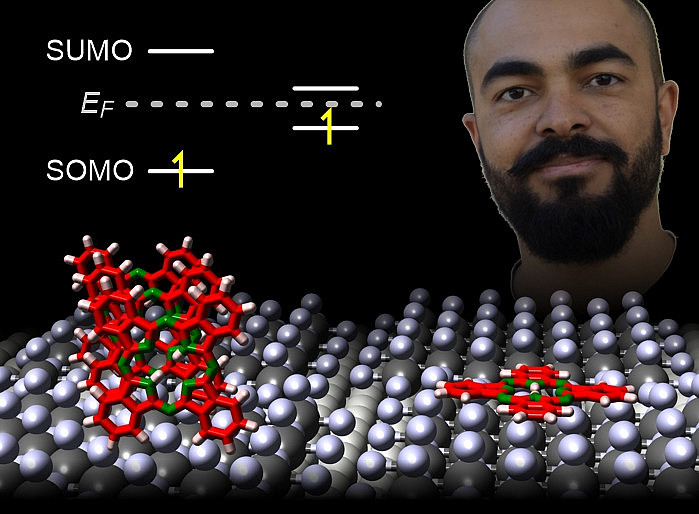MoO₃ has been employed for years in organic electronic devices as an ultrathin interlayer to enable controlled transport of electrical charges. Until now, however, the microscopic details of how charge transfer occurs at interfaces between MoO3 and organic semiconductor layers had not been fully understood.
The Graz team has used an ultrathin MoO₃ film as a model system and studied its interaction with phthalocyanine molecules, a typical organic semiconductor. The results are based on a combination of high-resolution scanning tunneling microscopy and spectroscopy, X-ray absorption and photoemission spectroscopy, as well as quantum-mechanical simulations. This approach enabled a detailed investigation of both the structural properties and the electronic states at the interface.
The study demonstrates that when the organic molecule comes into contact with the ultrathin MoO₃ layer, a full electron is transferred from the molecule into the oxide. This so-called integer charge transfer leads to the formation of positively charged molecules whose electronic properties strongly depends on their orientation and on interactions with neighboring molecules on the surface.
The study was carried out in collaboration with partners at CNR-IOM in Trieste and the Institute of Chemistry at the University of Graz. It was supported, among others, by the University of Graz and the DocAcademy NanoGraz.
M. Niederreiter, M. Laßhofer, F. Presel, G. Zamborlini, L. Floreano, L. Schio, N. C. Mösch-Zanetti, S. Surnev, P. Puschnig, M. Sterrer
Microscopic origin of charge transfer at the organic semiconductor/MoO3 hybrid interface.
J. Phys. Chem. C, 2025, https://doi.org/10.1021/acs.jpcc.5c05641
